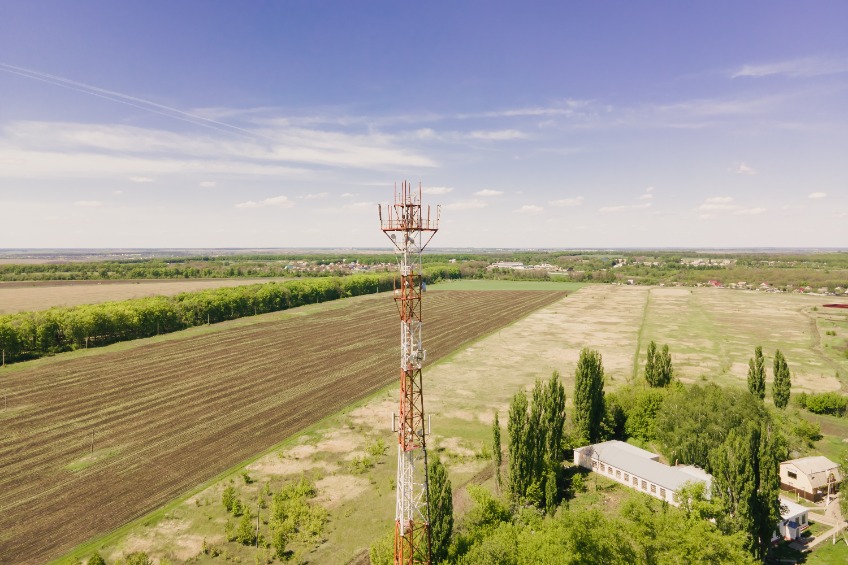The COVID-19 pandemic redefined how technology plays a role in our work, school, and personal lives. At the same time, it also highlighted a troubling and persistent issue: 6% of the country, or approximately 19 million people, still lack access to reliable and high-speed broadband internet access. This concerning occurrence is what has become known as the digital divide.
The pandemic’s impact on exacerbating the shift to digital technologies and operations for businesses, health systems, and schools cannot be understated. With the shift towards remote work and schooling, its effect on underserved communities, particularly rural areas, has only worsened.
The biggest challenge service providers now face is identifying how to increase broadband access within these communities so they can begin addressing the significant lack of access to high-speed broadband internet that rural students and workers currently experience — and close the divide for good.
Closing the gap with IP optical networks
The persistence of remote work, schooling and healthcare begs the question of what can be done to close the digital divide. In the past, providing high-speed connectivity was enough to satisfy the demands of the average household or business. Now, more sophisticated services like real-time video platforms and telehealth require far more bandwidth, making symmetrical speeds necessary for organizations to maintain strong, reliable internet connections with low latency.
This increased need for higher bandwidth and lower latency requires significant investment in our broadband networks, and particular investment in packet and optical networks. These networks rely on fiber-optic cables and light as the primary mechanism for converting and passing data and voice communication through a network, enabling providers to supply a higher bandwidth aggregation out to the edge and, in turn, deliver high-speed services.
While it is not the only broadband technology capable of delivering high-speed services, optical fiber provides limitless and fully symmetrical speeds, as well as greater capacity — guaranteeing service performance. This is because light beams do not interfere with each other, so a single strand of fiber-optic cable can carry optical signals on various wavelengths at once, with each light beam transferring its own data content.
Optical networks are also characterized by their range, possessing the capability to move more data across a cable at longer distances. Using electronics and copper, speeds top out at around 100 Gbps over short distances. Fiber can move data over a single data channel and across multi-mile distances and with further amplification.
To make high broadband speeds a reality, simplification and diversification of services will be key. Traditional approaches to network architectures focus on transport optimization. However, these approaches typically result in networks characterized by nailed-up capacity and supporting oversubscribed services. For rural communities with sometimes limited staff, diversification of services will help ease the burden of the reallocation of network resources to account for large amounts of data flowing through their networks.
With a converged IP/optical architecture, paired with a services-driven approach in which the network is optimized for need, service providers can optimize service quality, capacity and network resources across IP and optical layers based on the networks’ ability to meet the performance requirements of the services mix, without the need for over-engineering or over-building the network.
Additional considerations to make broadband access a reality for all
Beyond adopting IP optical networks, there are several additional actions service providers must take to make broadband access a true reality for everyone. Although federal funding and grants have enabled providers to facilitate broadband deployment to rural customers, providing ongoing maintenance for the network represents a huge hurdle for communities. Even for the communities that currently have broadband access, many do not have the staff or funding required to maintain continuous fiber optical health monitoring, which would prevent service disruptions as a result of fiber degradation, weather and animals. These service disruptions can have a huge impact on communities, as it takes an average of fourteen hours to repair fiber optic cables.
By strategically distributing optical time domain reflectometer (OTDR) modules throughout the fiber plant, it is possible to continuously monitor fiber health from a centralized control center. As a result, understaffed rural areas can detect fiber degradations and breaks before they occur and before service is affected.
In addition, service providers can also consider deploying a multi-service business network offering through service-level agreements with rural businesses to further alleviate the financial burden placed on communities. Deploying these offerings facilitates the augmentation of networks to build higher levels of bandwidth out to the edge where rural customers live.
Beyond federal collaboration, local community outreach should be a priority moving forward. Providers need to play an active role in the education of the community, asking for input and engaging them early in the process. For communities concerned about network availability, helping them to understand build out plans and other specifics will go a long way in digitizing their networks.
The bottom line: Providers must build for today but anticipate what is to come. As education, health, business and governmental services become more reliant on high bandwidth and performance networks in our remote-driven world, providers must work to narrow the digital divide and ensure all Americans, regardless of location, have access to broadband internet. The old system of overbuilding a network is no longer financially feasible with such high maintenance costs. Providers need to deploy infrastructure that is scalable, flexible and offers room for growth — both in bandwidth and geography.
We have already begun to see the effects of the digital divide on our population as reliable internet access has become essential to our daily lives; schoolchildren struggle to access resources they need to succeed, rural workers miss out on remote career opportunities and every day citizens struggle to access basic healthcare services. It is wonderful to see network speeds ramping up in rural America to help those in need.

